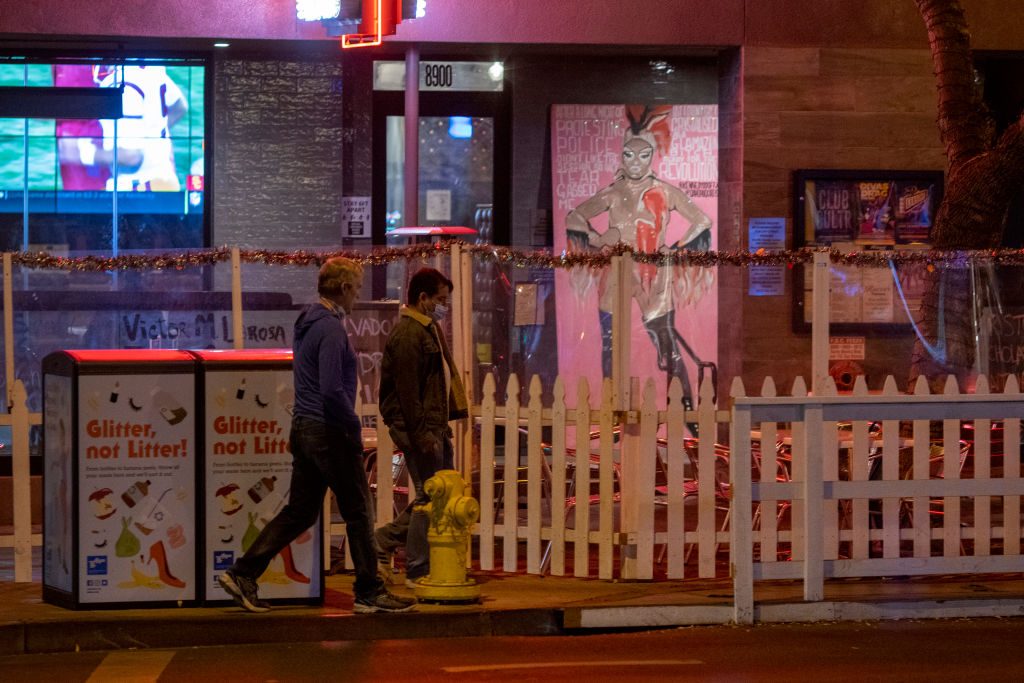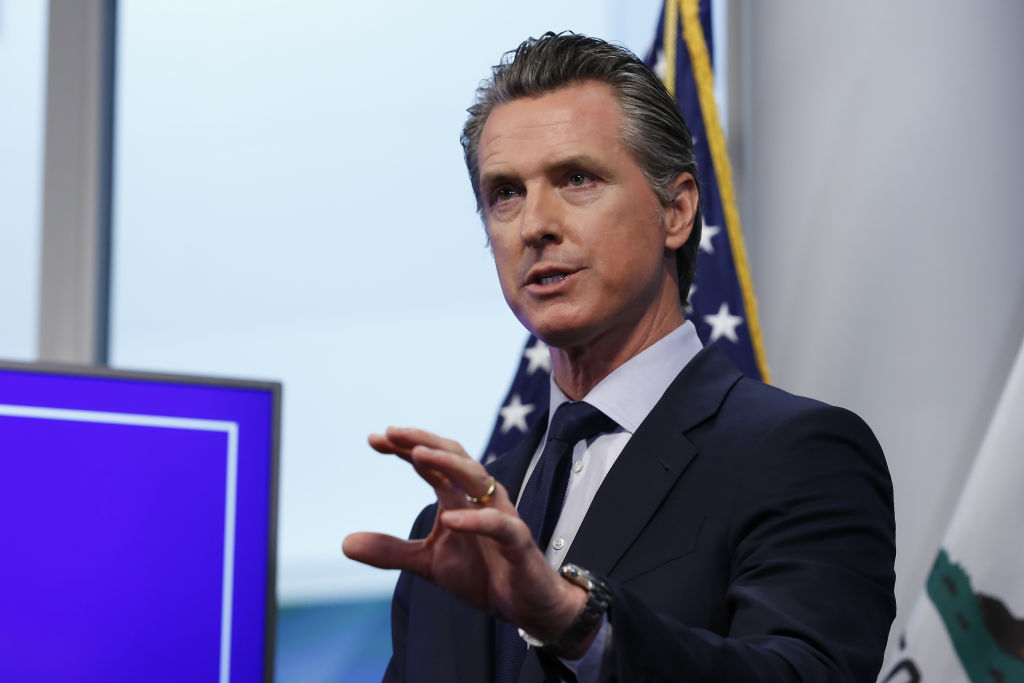
Come Saturday night, California will join other states and nations in trying a partial overnight curfew as its latest desperate attempt to stem a surge in coronavirus cases, though experts said its effect may be more symbolic than real and many law enforcement agencies are refusing to enforce it at all.
Officials said what they are calling a limited stay-at-home order is aimed at discouraging late gatherings where people are more likely to let down their guard, their inhibitions — and their required masks — while drinking and socializing.
The curfew announcement came as California reported a record 13,000 confirmed cases and 232 new hospitalizations, among the highest one-day totals. About 12% of those new cases will be hospitalized in coming weeks, based on trends, said Dr. Mark Ghaly, the state’s top health officer.
The increase could soon threaten to swamp the health care system as it has in other states and nations. Santa Clara County’s public health officer said Friday that hospitalizations there could exceed capacity soon, and Los Angeles is on the verge of declaring another more stringent lockdown.
The newest restrictions require people not on essential errands to stay home from 10 p.m. to 5 a.m. through Dec. 21, with a possible extension if rapidly worsening trends don’t improve.
By design, the restrictions are less intrusive than California’s first-in-the-nation, around-the-clock lockdown in March that officials credited with slowing the spread early in the pandemic.
This curfew applies to 41 of the state’s 58 counties that are in the most restrictive of four tiers allowing stages of economic reopening, though it encompasses 94% of the nearly 40 million people living in the most populous U.S. state.
But for now, it excludes San Francisco and neighboring Marin and San Mateo counties, raising questions of whether San Francisco Bay Area residents can simply party across county lines. Although San Francisco’s health director said the city could move into the more restrictive tier as early as Sunday, the distinction prompted the dean of the Legislature, Republican Sen. Jim Nielsen, to accuse Gov. Gavin Newsom of favoring “three extremely wealthy and very Democratic counties.”
However, this surge is exploding in rural areas that were largely spared in the first go-round: Lassen, Sutter, Imperial, Tuolumne and Shasta counties, in that order, now have the state’s highest per capita rates.
Officials in El Dorado, Fresno, Los Angeles, Orange, Placer, Sacramento, San Bernardino and Stanislaus counties were among those saying they would not enforce the curfew, with some strongly opposed.
“The Sheriff’s Office will not come to your home, question you or your guests or pull you over for driving during the curfew,” Stanislaus County Sheriff Jeff Dirkse said on Facebook.
“The Order itself lacks direction regarding methods, specific statutes, and enforcement criteria, as to whether the Governor intends to try to hold violators of this Order accountable in criminal courts,” Fresno County’s district attorney said in a statement Friday, adding that her office would “not be initiating criminal charges for any felony or misdemeanor violations of this Order.”
Rocco Temasamani, who was selling jewelry at a stand at San Diego’s Ocean Beach on Friday, said the curfew will just anger people who consider it government overreach, particularly supporters of President Donald Trump.
“How are you going to enforce it?” he asked. “You have enough police to give out tickets?”
Michael Maring, a mechanic from El Centro who was visiting a friend in San Diego Friday, said his brother tested positive and he plans to follow the curfew. But he predicted it will only produce an angry backlash from people who think the governor is overstepping.
The combination of lax enforcement, a lack of county uniformity and the limited nature of the curfew has experts questioning its effectiveness.
Dr. Mark Cullen, an infectious disease expert who recently retired from Stanford University, said the underlying goal is based on a reasonable interpretation of data blaming gatherings for surging infections.
“Large numbers of people getting together oblivious of controls — no masks, no social distancing, often indoors — a lot of those things are in fact occurring at night,” he said.
But the point will be lost on most, he fears, partially because California is allowing many exemptions for things like getting groceries, filling prescriptions, picking up takeout, and even walking dogs.
“And then it’s completely undermined if you’re not going to enforce it,” Cullen said. “Limiting people’s nighttime activity specifically, without enforcement, doesn’t necessarily appear to be a productive strategy, and I don’t have much evidence outside of a relatively authoritarian enforcing situation in which we have reason to believe it worked.”
It could be counterproductive, said Dr. Lee Riley, an infectious disease professor at the University of California, Berkeley, School of Public Health.
Officials in London who tried a similar approach found that “if anything, for the young people it may have increased their social gathering activities,” he said. “They can’t go out, so they congregate in somebody’s home or dormitories.”
Moreover, it makes no sense not to apply the standard statewide, he said.
“So I’m not sure how effective this is going to be,” Riley said. “But the state feels that they have to do something. I think it’s going to be mostly a cosmetic effect and not so much a real impact on interrupting this transmission.”
___
Associated Press writer Elliot Spagat contributed to this story from San Diego.



